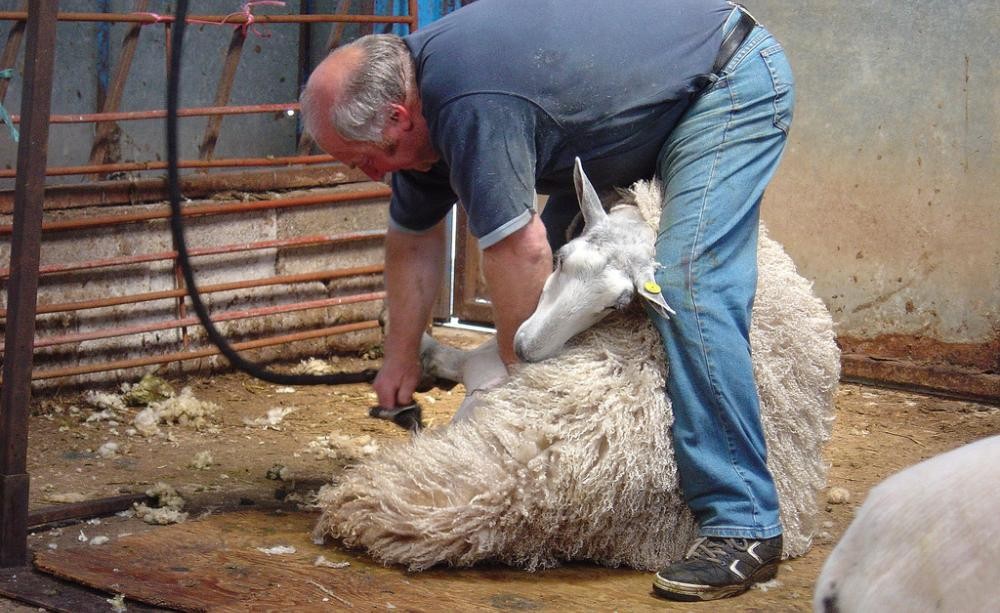
The Harmful Reality of Sheep farming and wool Industry
Introduction
Watching sheep graze in lush meadows is a lovely way to pass a sunny afternoon. In stark contrast to that benign pastoral image is the ugly truth that the wool industry is wreaking havoc on the living planet. Ashcep naturally grows adequate wool to protect itself from extreme temperatures. However, the sheep for shearing are genetically manipulated to produce a lot more wool.
Senetic manipulation is in itself unnatural and unethical since lives are altered without consent for the seyish economic gain of man.
The Wool Industry
Wool is a mass-market commodity that operates stealthily under many layers of mythology, from legends of the golden fleece to bucolic images of sheep peacefully grazing in open pastures.
According to the 'Pulse of the Fashion Industry' report, woolis one of the five most environmentally damaging materials All sheep who are bred for wool are also slaughtered and sold, as meat'. For this reason, the sheep industry often calls them 'dual-purpose'.
Australia the biggest Industry
Australia alone accounts for the production of wool than any other country and globally one fifth of wool production. whereas about 83% of the wool from Australía goes to china, while India and the Czech Republic are major importers as coell. Australian wool usually comes from the Menino sheep. Merinos are specifically bred to have wrinkled skin es since that produces a tremendous amount of hair.
In Australia, the United States, the United Kingdom and most countries across the world, almost all forms of painful mutilation are acceptable and legal because farmed animals are exempt from protection, or their pain is deemed necessary 'to business.
Data and Stats
In 2018 Australia exported 152 million dollars worth (41.47 million kg) to Indía.
Almost 10-15 million lambs die due to hypother mic exposure, starvation or neglect in the first 48 hours of their lives. Lambs are slaughtered b/wo 6 to 9 months ok. for lamb meat.
According to the 'Pulse of the Fashion Industry' report and the Higg Materials Sustainability Index , the greenhouse -gas emissions generated in wool production are far greater than any other materials. Around 550 million sheeps are slaughtered every year.
Challenges animals are facing
1. Sheep are grown to get more and more wool on their bodies - some cannot even walk any more.
2. Sheeps hairs are oily, and the area round the anns is warm, sometimes blowfly lay their eggs on skin, and the larvae feed on sheeps tissue.
3. Whenever the sheeps are sick and their hair goes down, the industry cuts the skin from the buttocks without anaesthesía.
4. Many sheep die from the abuse, lack of shelter and nutrition, discares due to poor hygiene, untreated wounds, premature shearing.
5. The mutilation and torture of sheep do not end till after sheep have been sheared. Sheep from australia, argentina, and are shipped to the middle east, osla, and north america for slaughter.
6. Other forms of wool came from the Cashmere goats Found in the mountains of JaK. This industry also witnesses cruel practices like dehorning, ear notching without anesthesía. Alpacas also face the same problem as the wool Industry.
Sheep farming carbon footprint
1. In New Zealand, gases passed by animals - mostly sheep-make up more than 90% of Nation's total methane emission.
Pesticides and Insecticides used for sheep health are washed by water which also contaminates water sources.
3. In Australia 54% of land clearing is only for animal grazing.
4. To produce one Bale of Australian wool, 44 hectares of land must be cleared.
5. Australian species → dingoes are killed and In the US wolves are shot dead by the wool industry. In UK foxes are shot dead.
Solution
1) Using vegan fabrics made of coconut by-products, organic cotton, bamboo, linen and recycled fibres.
2) People for Start on can use synthetic fabric rather than wool items.
3)There is a Fabric named Polartec wind Pro, cohich, is four times more wind resistant than wool.
4)A wood knit garment emits 27 times more greenhouse gas emission than a colton krit garment. It's our choice to choose wisely.
Conclusion
While wool remains a valuable fibre, it's essential to address the harms that sheep farming can inflict on the industry. By taking the issue seriously and making necessary changes, we can contribute to a healthy environment.
Shifting from wool to non-animal materials is not only profitable and ethical, It's necessary for the future of the industry and the planet. The industry must take responsibility for positive environmental impacts and cruelty and take actions to create a world where people, wildlife and beauty can thrive.
Vice President
6moSheep farming and the wool industry often involve inhumane practices, environmental harm, and ethical concerns, warranting greater scrutiny and change.
Chief Operating Officer
6moSheep in the wool industry often endure rough handling and stressful shearing processes, leading to injuries and distress.
Operations Manager
6moऊन उद्योग दुर्भाग्य से भेड़ों के लिए एक क्रूर वास्तविकता से जुड़ा हुआ है, जिन्हें कड़ी कैद में रखा जाता है और विभिन्न कठोर उपचारों के अधीन रखा जाता है।